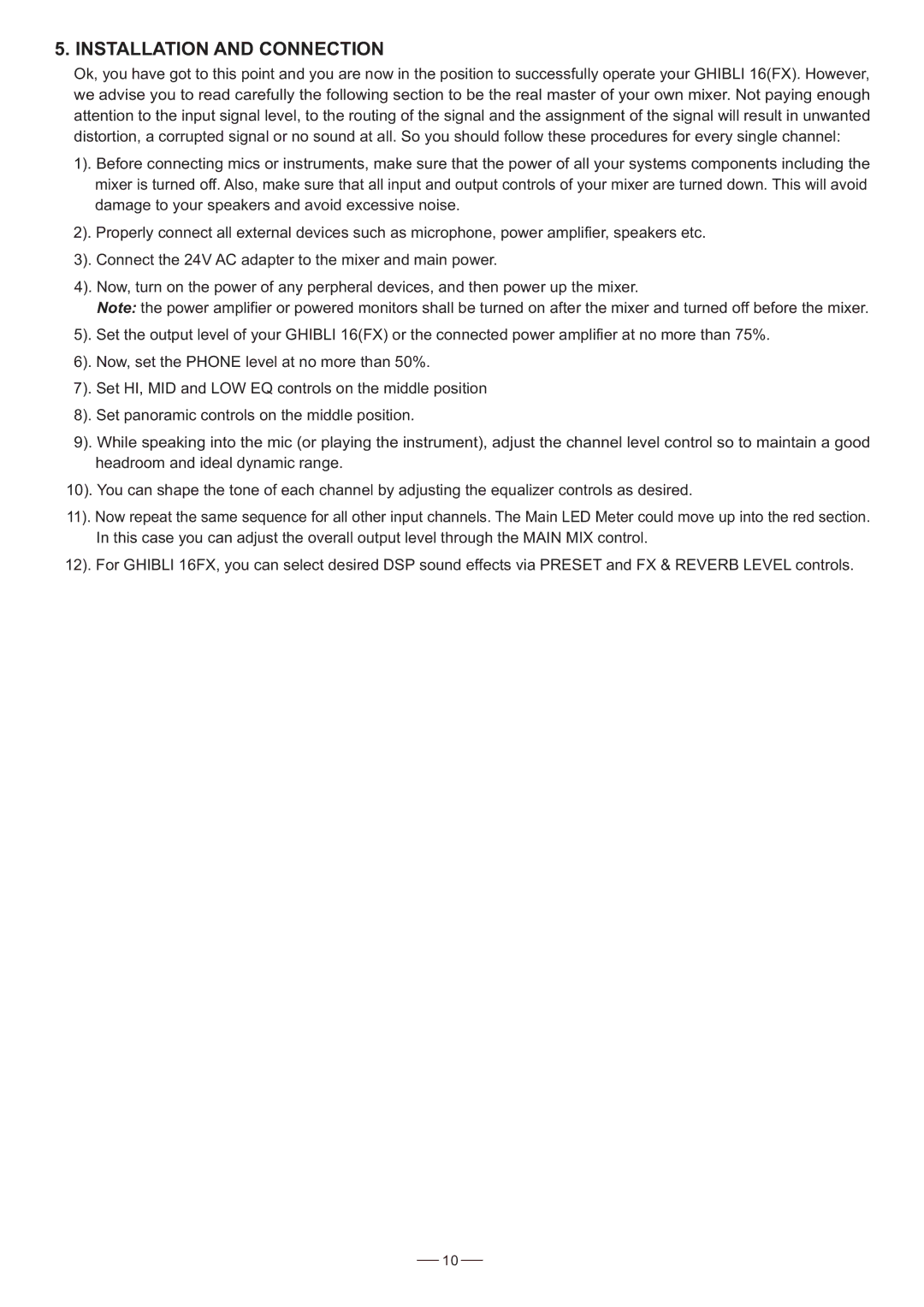5. INSTALLATION AND CONNECTION
Ok, you have got to this point and you are now in the position to successfully operate your GHIBLI 16(FX). However, we advise you to read carefully the following section to be the real master of your own mixer. Not paying enough attention to the input signal level, to the routing of the signal and the assignment of the signal will result in unwanted distortion, a corrupted signal or no sound at all. So you should follow these procedures for every single channel:
1). Before connecting mics or instruments, make sure that the power of all your systems components including the mixer is turned off. Also, make sure that all input and output controls of your mixer are turned down. This will avoid damage to your speakers and avoid excessive noise.
2). Properly connect all external devices such as microphone, power amplifier, speakers etc.
3). Connect the 24V AC adapter to the mixer and main power.
4). Now, turn on the power of any perpheral devices, and then power up the mixer.
Note: the power amplifier or powered monitors shall be turned on after the mixer and turned off before the mixer.
5). Set the output level of your GHIBLI 16(FX) or the connected power amplifier at no more than 75%.
6). Now, set the PHONE level at no more than 50%.
7). Set HI, MID and LOW EQ controls on the middle position
8). Set panoramic controls on the middle position.
9). While speaking into the mic (or playing the instrument), adjust the channel level control so to maintain a good headroom and ideal dynamic range.
10). You can shape the tone of each channel by adjusting the equalizer controls as desired.
11). Now repeat the same sequence for all other input channels. The Main LED Meter could move up into the red section. In this case you can adjust the overall output level through the MAIN MIX control.
12). For GHIBLI 16FX, you can select desired DSP sound effects via PRESET and FX & REVERB LEVEL controls.
10
